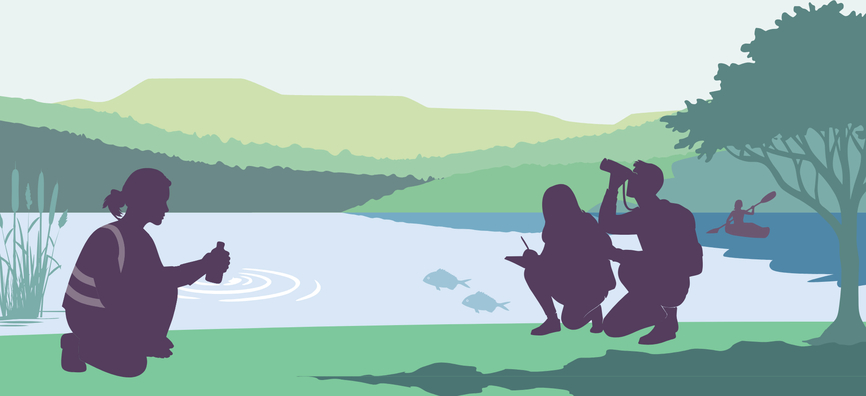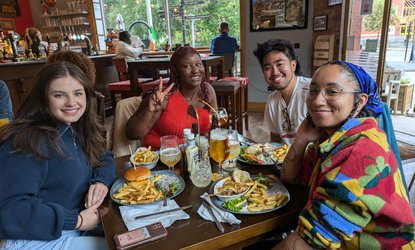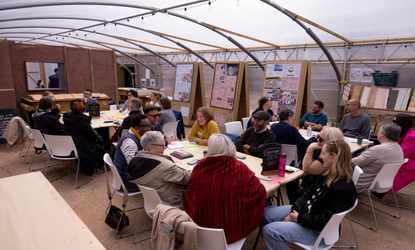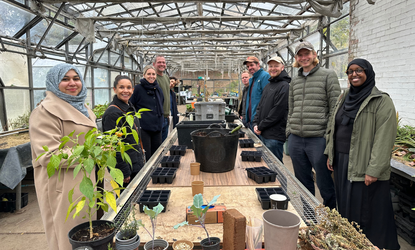In the first of a series of blogs, Liam McAleese, Director of Our Natural World, writes about the roadmap we have been working to for improving Our Natural World, and how we are getting on, as well as our plans for the coming year. We would love to hear what you think and welcome feedback on our work, approach and to help us identify new opportunities.
In October 2020, we launched a new strategy to improve our natural world, strengthen the bonds in UK communities and secure a fairer future. To deliver this, we have developed a roadmap to identify the contribution we can make and to guide a proactive approach to our work.
In upcoming blogs, we will share more detail about our roadmap work in line with our five interrelated “Our Natural World” priorities: peat, freshwater, space for nature, nature friendly farming, and fishing in tandem with nature. We also want to share more about our work on financing nature's recovery, and diversity, equity and inclusion, which we consider as cutting across all our areas of work. Our work is also underpinned by a commitment to address the causes and impacts of climate change. You can learn more about what we've been doing in our recent Funder Commitment on Climate Change update.
First, some numbers
Esmée’s Our Natural World Team are Jenny Dadd, Simon Wightman, Laurence Scott and Danny Newton and me. Together, and with the wider Esmée team, we manage a portfolio of over 90 relationships and activities supporting work in Our Natural World. Since the launch of the new strategy, we have agreed almost £23 million in grants, projects and social investments to support the delivery of Our Natural World priorities. We publish all of our funding in our annual reports or on 360giving if you’d like to see the whole list.
Our approach
1. Asking what more can we do
A key question underpins our strategy and values: what more can we do? Our ‘roadmap’ was developed in response to this question for each of our areas of work.
2. Working together with others
Also key to our strategy is that we do not want to work alone. So, for us, it is important that our work is based on evidence and engagement with our partners in the sector. We are also fortunate to be able to seek input from our advisory panel for Our Natural World.
3. Using all our tools
Our strategy commits us to go beyond grant making and to use all the tools available to us to deliver impact. For example, our work on new models of financing nature recovery has involved research, convening events, funding pilot projects, developing new partnerships with other funders, and using social investment.
4. Understanding the key levers for change
An early action for us was to understand some of the key levers for change that will underpin progress across multiple priorities – essentially policy, law, money and people. We looked across our portfolio to ensure we were supporting the core costs of organisations that we believe are key to underpinning change as well as providing key foundations for the environment movement. These include brilliant organisations like the Wildlife and Countryside Link, Scottish Environment Link, Wales Environment Link, Northern Ireland Environment Link, Greener UK, the Green Alliance and the Broadway Initiative. These organisations have been essential in influencing the Post-Brexit policy and legislation that will shape our natural world and communities for generations. And we are working with organisations such as Client Earth to use the law and strategic litigation to hold the Government and others to account.
Another key lever of change is money. We need fundamental change in the way financial systems operate and how investment and investors can be a force for good. This is why we have agreed new funding for ShareAction and CDP to continue their excellent work. We have also been working actively to support the development of new models and markets for financing nature recovery.
5. Ensuring people are at the heart of change
And of course, fundamental to any change is people and communities, particularly those excluded and under-represented. We see where and how we can integrate people into all of our work. Our focus on people ranges from ‘boots on the ground’ support to Peatland Restoration Partnerships, citizen scientists monitoring water quality, farmers working together to change their farming practices, communities buying land for rewilding, to young people taking action on the climate and nature crisis.
Welcoming new opportunities to make progress towards our goals
Whilst our roadmap guides our proactive work, we believe it’s essential that we remain an open funder to ensure that we are exposed to expertise and ideas from a wide area, particularly those organisations we have not worked with before. In the last 12 months, 25% of organisations we worked with was for the first time. We welcome Expressions of Interest for work towards our impact goals, and we’re happy to discuss ideas people may have around shared goals. Details for getting in touch are below.
What we want to do more of next year
In learning from our work, we want to be honest as to where we are not making as much progress as we’d like. There are all sorts of things we want to do more of across our priority areas (more of that in our future blogs - we'll keep updating this page with links below as they are published).
However, there are three ‘cross-cutting’ areas that are on our mind:
- The first is to further develop and support work and organisations that engage with excluded and under-represented people and communities.
- The second area is around supporting new and unusual partnerships. As described in our webinar on restoring our natural world, this applies across all of our priorities, but we are going to be particularly proactive with it in our freshwater work, which is why we are recruiting a Freshwater Partnerships and Development Manager to help us do that. We want to hear from people and organisations with bold and ambitious ideas to restore nature at scale, and in a way that is led by and for communities. We are up for different models of working to support this.
- The third is to come up with some simple metrics to help understand our impact and track our progress. This is hard for all sorts of reasons, and we’d love to hear from others also thinking about this.
We are a very small cog in a big system, but we feel we are making progress and we are grateful for the continued effort from a huge range of partners and organisations that we work with. But in the critical decade of action for the climate and nature crisis, we will continue to ask ourselves “what more can we do?”. Please do have a look at our blogs and our work and if you spot gaps and opportunities, please get in contact: liam@esmeefairbairn.org.uk.









